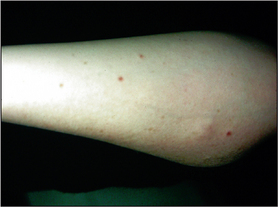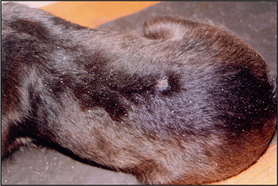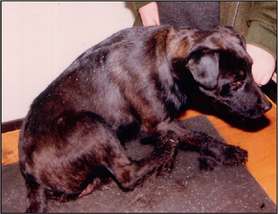8 Cheyletiellosis
CASE HISTORY
Other important history was as follows:
CLINICAL EXAMINATION
There were no abnormalities detected on physical examination. Examination of the skin revealed:
This was a long-standing dorsal pruritic skin disease in a young dog, which made ectoparasitic disease very likely. It would be very unusual for atopic dermatitis, or an adverse food reaction, to result in pruritus confined to the dorsal trunk. The degree and distribution of pruritus was not consistent with scabies, but was entirely consistent with cheyletiellosis. There was no history of direct contact with other dogs, or cats, but ectoparasitic disease could not be ruled out on this basis alone, as indirect transmission does occur. There was history of exposure to rabbits, which can carry Cheyletiella spp. of mites.
The differential diagnoses included:






